
In the Mood
The Friendly Invasion in Popular Culture, 1942 - Present
American Popular Culture in Suffolk
A Visit from the Stars
Many celebrities and stars visited the American bases in Suffolk during World War II as part of morale boosting tours for the troops. The United Service Organisations (USO) shows provided live entertainment that sometimes could include big names. Visits by World Champion boxer Joe Louis to Haughley in June 1944 and Bing Crosby to Hitcham on October 14, 1944 are just some of the famous names visiting the county. The music of Major Alton Glenn Miller has become almost a soundtrack to the ‘Friendly Invasion’ of Britain during World War II. Rarely is the American wartime presence mentioned by the media without ‘In the Mood’ or ‘Moonlight Serenade’ providing the musical accompaniment. Miller’s legend is all the more poignant because he and the aircraft in which he was travelling disappeared over the Channel without trace in December 1944. Miller or his band made seven appearances in Suffolk during the summer of 1944:

| July 24, 1944 | Wattisham |
| August 6, 1944 | Halesworth (followed by Boxted, Essex) |
| August 23, 1944 | Framlingham |
| August 25, 1944 | Knettishall |
| September 10, 1944 | Horham |
| September 15, 1944 | Bury St Edmunds (Miller cancelled and Dinah Shore performed) |
| October 1, 1944 | Great Ashfield (Sgt. Ray McKinley conducting the AAF Band). |
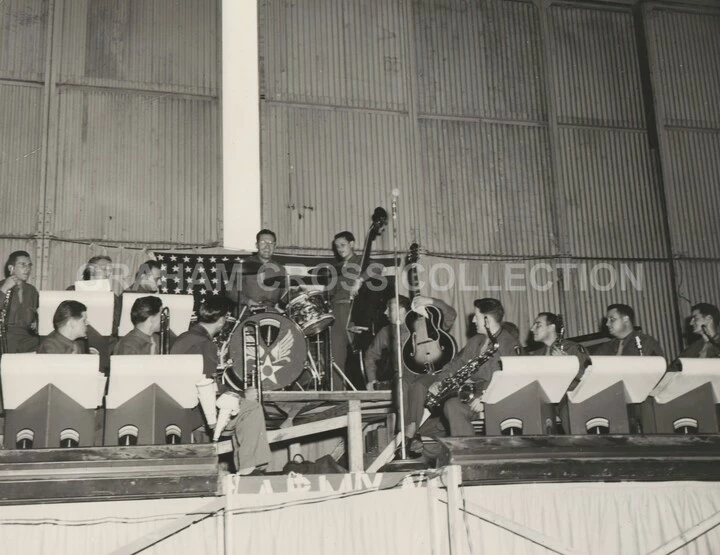
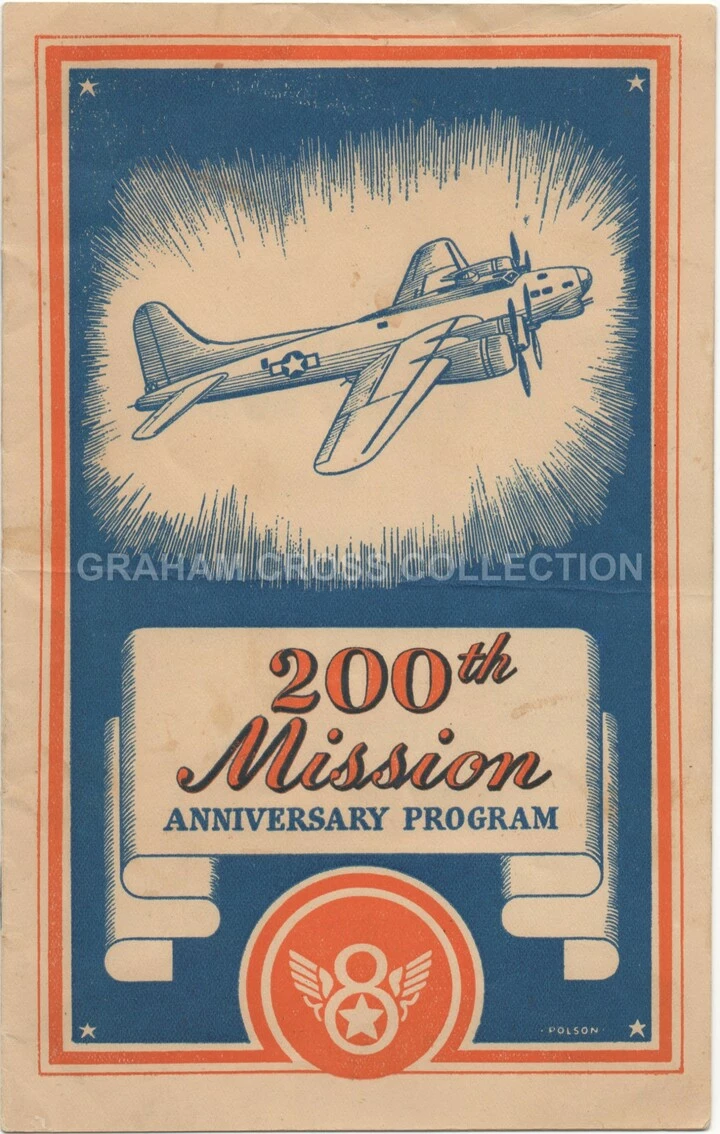
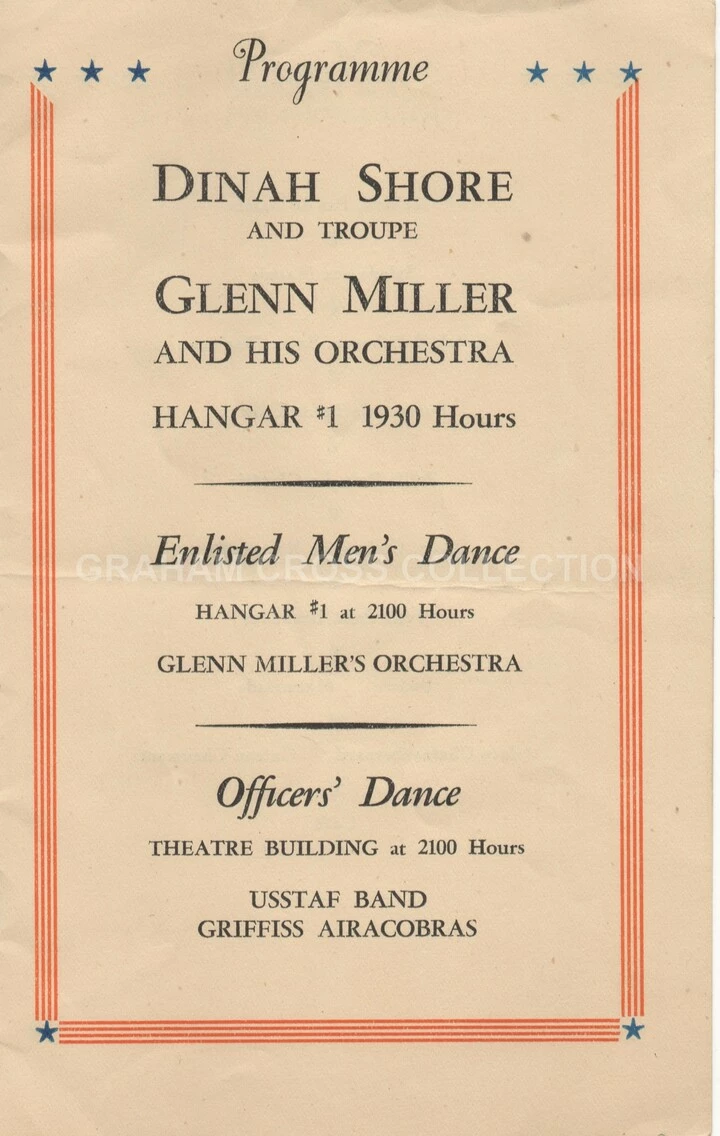
Of course, if you could not book Glenn Miller then virtually every base had its own or several bands to play at dances and celebrations around the region.

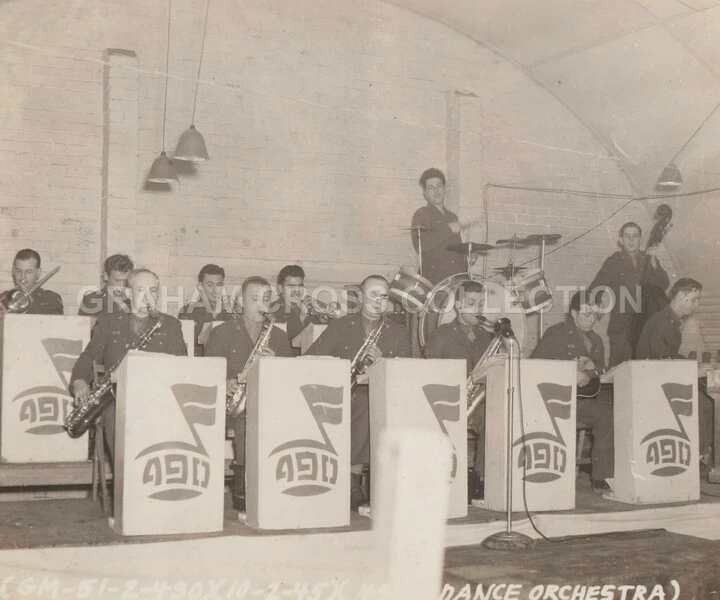


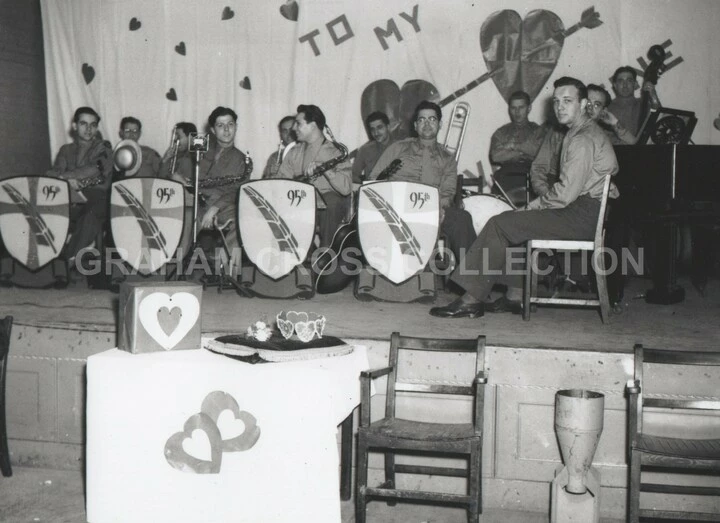
Sports
The Americans in Suffolk were also very active sportsmen and women. Leagues in a variety of competitive sports pitted the bases against one another. Baseball was very popular as the quintessential American game, but American football, basketball, boxing and many other sports were available to those who wanted to participate.
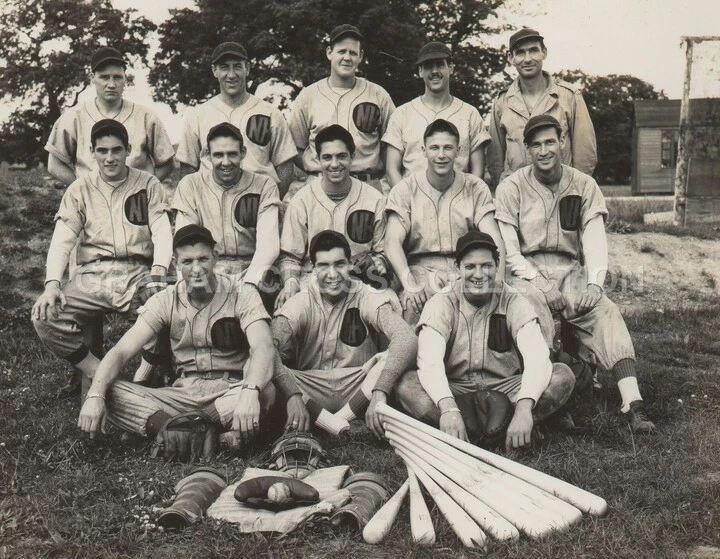
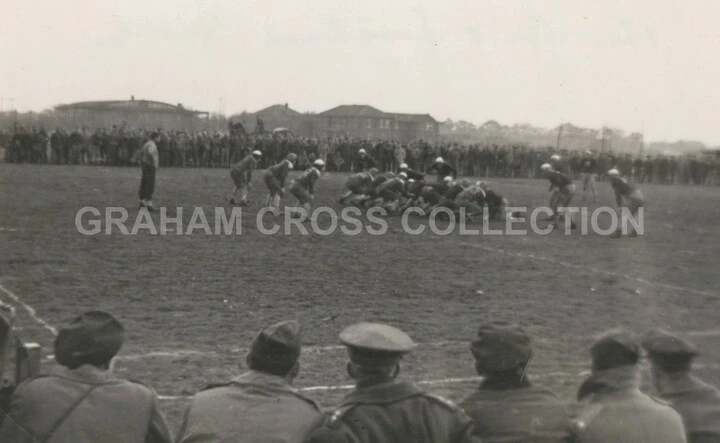
‘I had a day off Sat and I took in a nice football game. You know the football game they play is way different than we play. They play on a big field something like ours but wider. The players are dressed in shorts and stockings up to their knees….They don’t take any rest periods and the game is divided into forty five minute halves…They can’t use their hands only their feet or head. It is amazing how they have that ball under control all the time’
S/Sgt. Emil L. Savaro, 359th Fighter Squadron, 356th Fighter Group, Martlesham Heath September 26, 1943
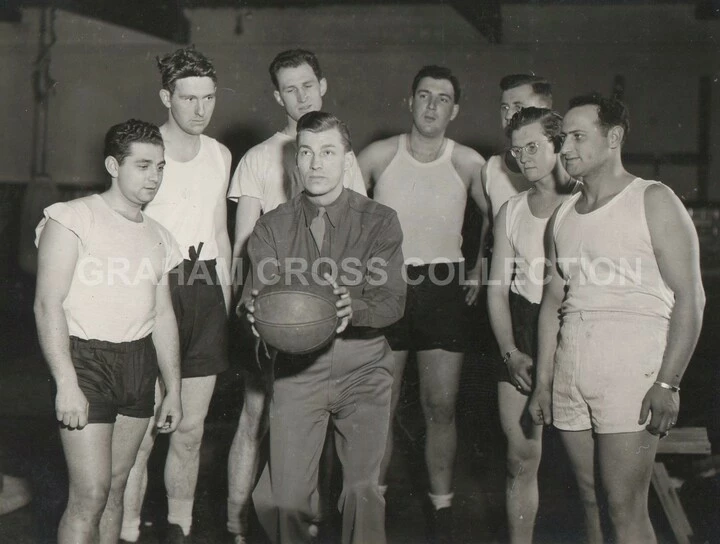


Artwork
The Americans were also renowned for their, at times, elaborate artwork. It helped homesick young men remember home, paid homage to opposite sex, provided a subversive dig at military authority and generally brought a bit of colour to drab, uniform bases, clothing and military equipment. In places, it has survived to this day providing a ghostly echo of wartime human exuberance.




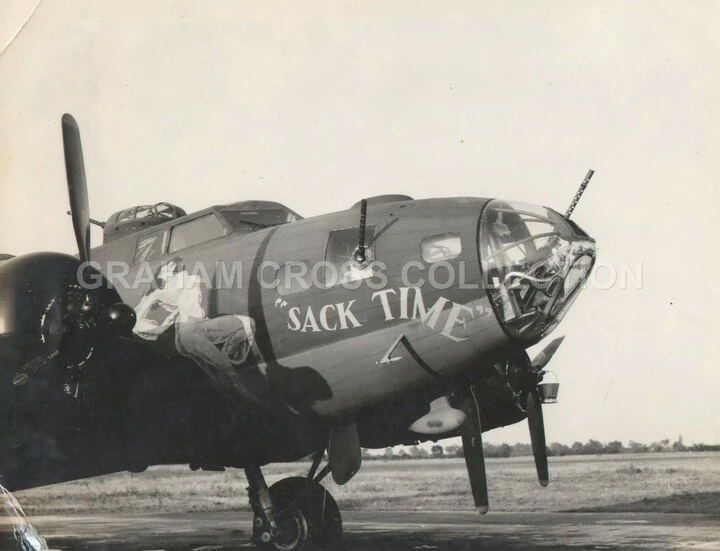
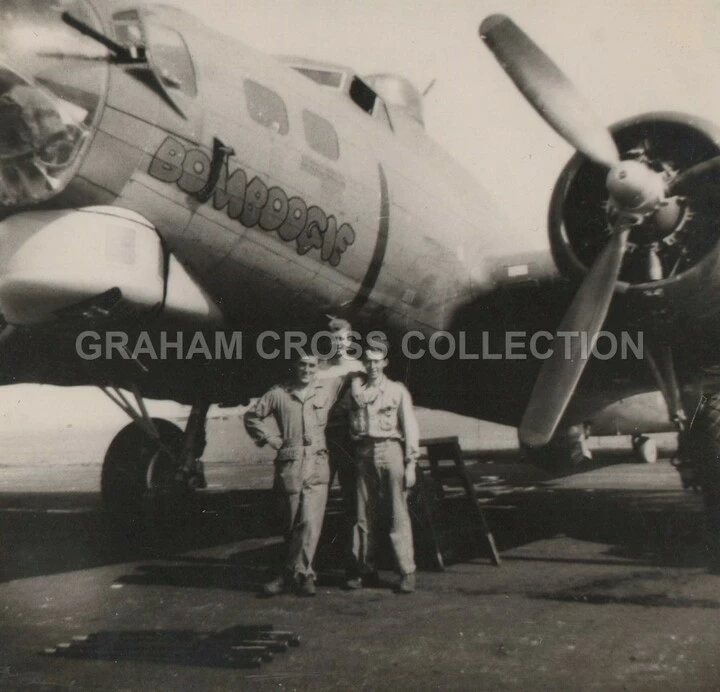
Contemporary Unit Histories
The Americans created a lively publishing phenomenon in the ‘yearbook’ style while in Britain and in the years following the war. Some of these ‘souvenirs’ were brief, ephemeral efforts while others were substantial encyclopaedic records of virtually every aspect of life on base during wartime. Many groups hired a professional yearbook company (usually Newsfoto Publishing Company from San Angelo, Texas) to produce their history. For that reason, many follow a similar format of mission lists, photos and names and addresses of personnel. Nevertheless, they all provide a valuable window on the American world in Suffolk during World War II. The following presents a selection, not a comprehensive record, of these fascinating publications.


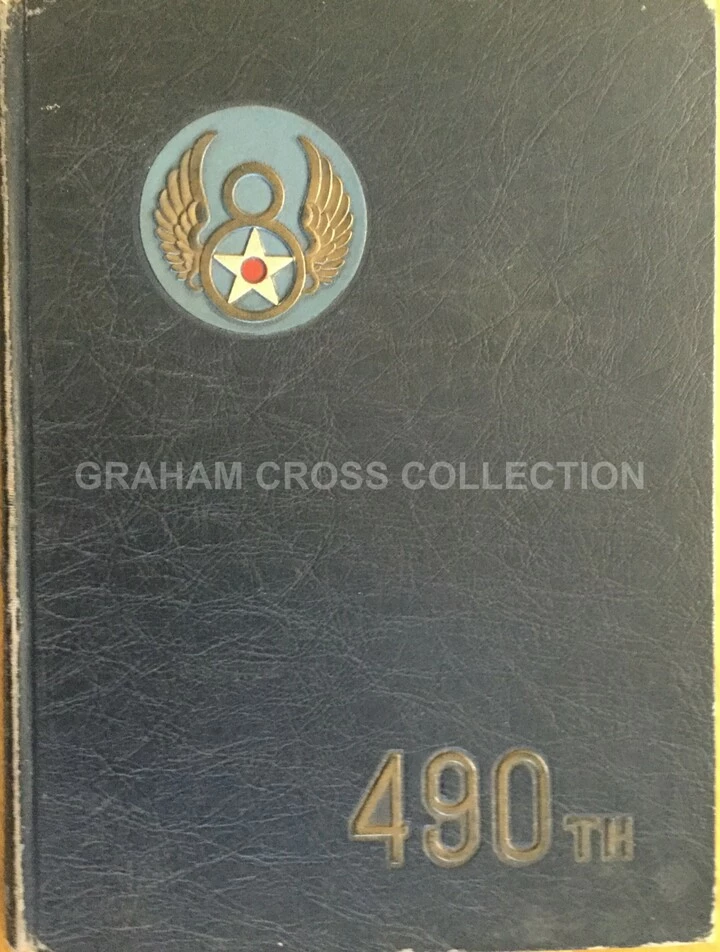

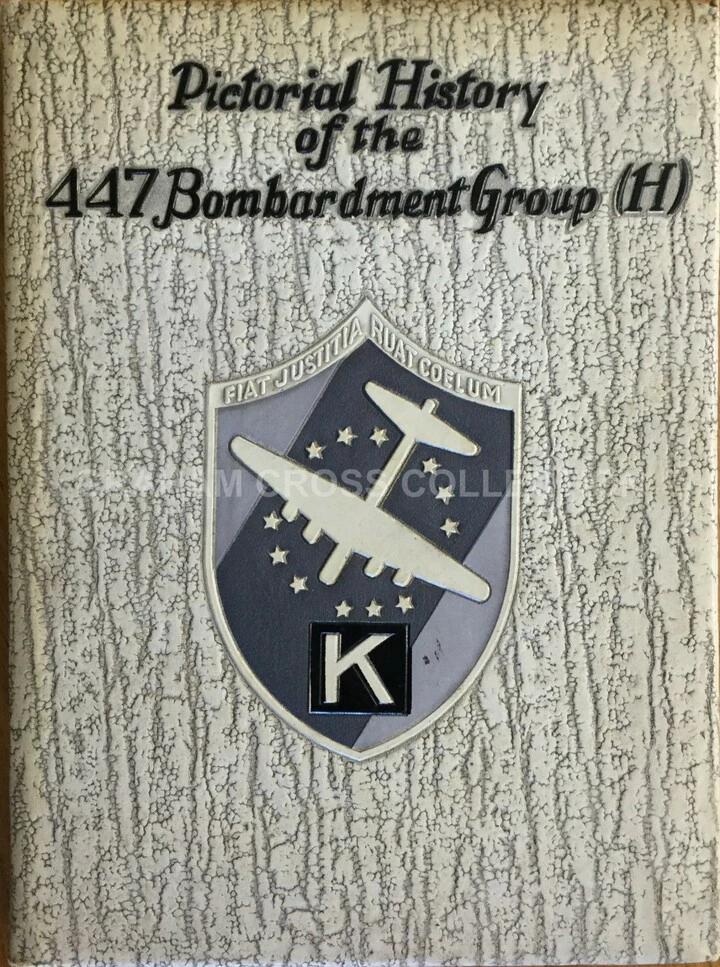
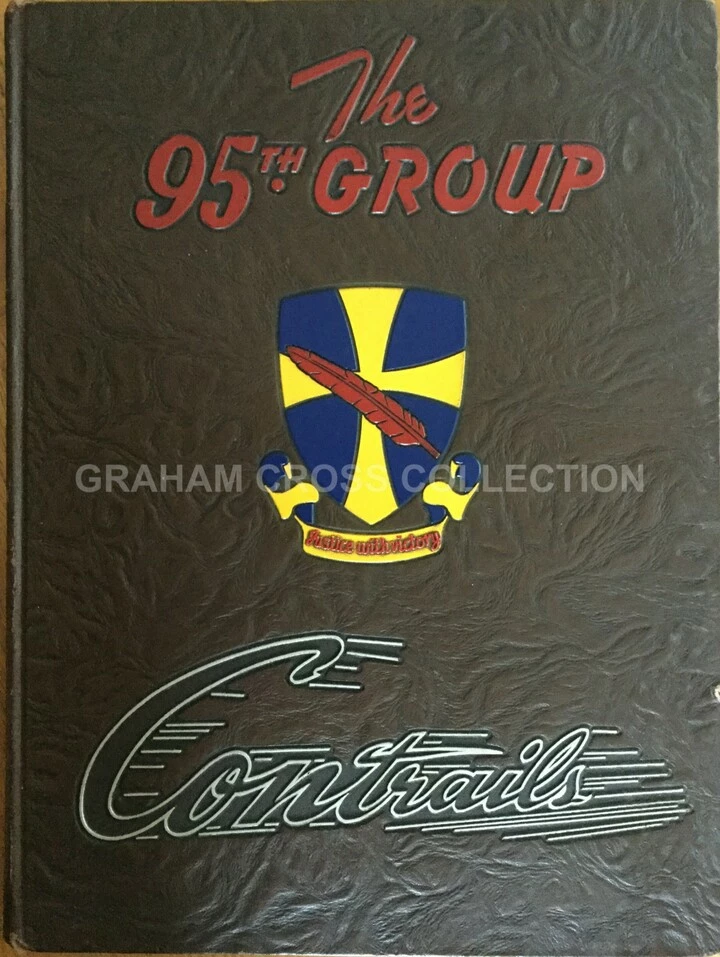
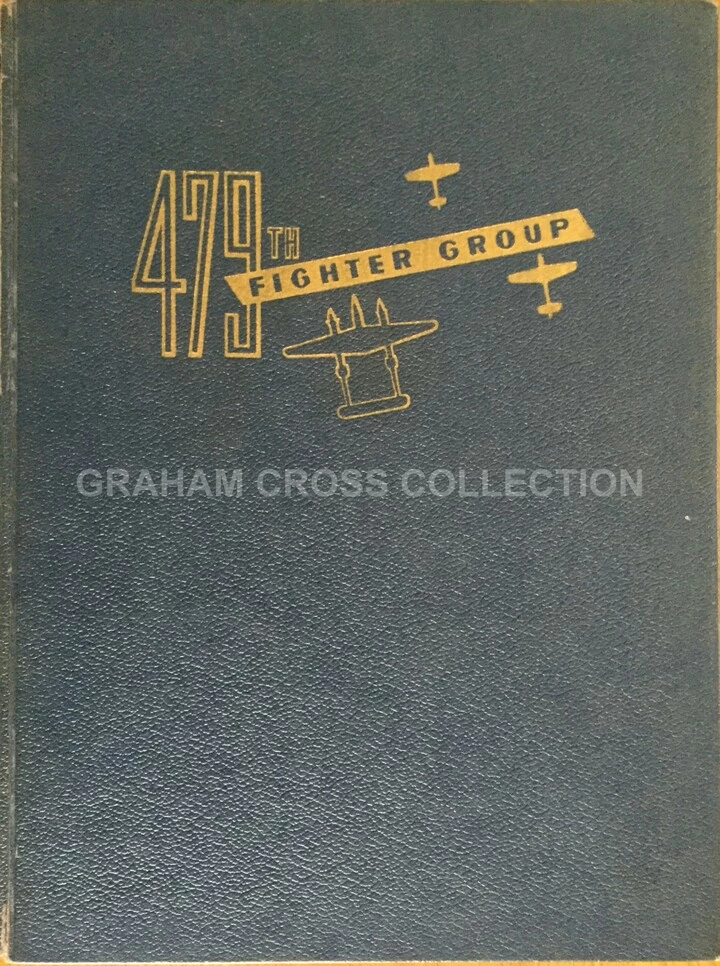
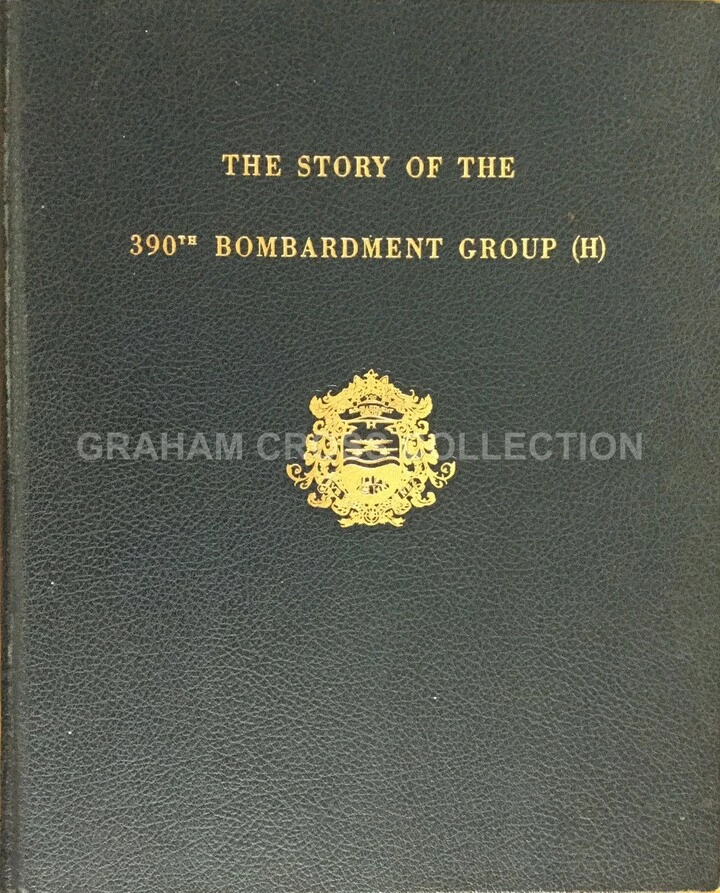
John T. Appleby and Suffolk Summer
In a quiet corner of the mid Suffolk town of Bury St. Edmunds, you can see a rather unusual seat. It was fashioned from the wing of a B-17 and gifted to the town as a memorial to the men of the 94th Bombardment Group, marked with a big square who flew from the nearby airfield and whose men spent a lot of time in the town during their time in England. Next to the seat is a more modern marker stone dedicated to all the USAAF airmen who flew from Suffolk during the War.
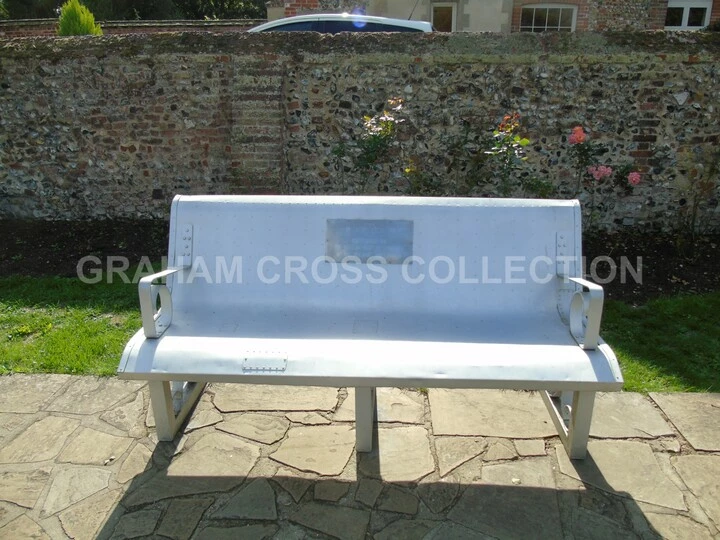
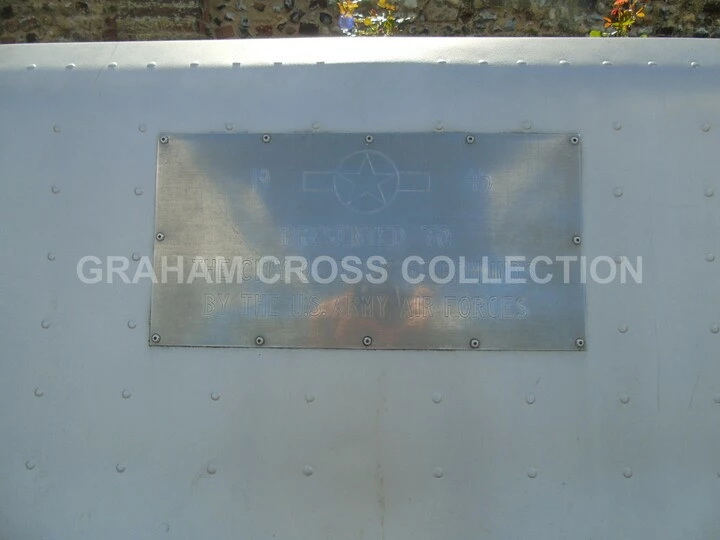
The seat and memorial stone stand in the John T. Appleby Rose Garden with 16 beds of roses and over 400 bushes within the Abbey Gardens adjoining the ruins of the 11th Century Benedictine Monastery. ‘Jack’ Appleby was a Technical Sergeant first with the 487th Bomb Group at Lavenham and then with the 100th at Thorpe Abbotts. So entranced was he with the people and place of Suffolk during his brief stay in 1945 that he went on to write a nostalgic love letter to the county in the form of his book Suffolk Summer published in 1948 (and continuously in print since). Appleby donated the royalties to the upkeep of the rose garden as a lasting memorial to the American wartime presence.
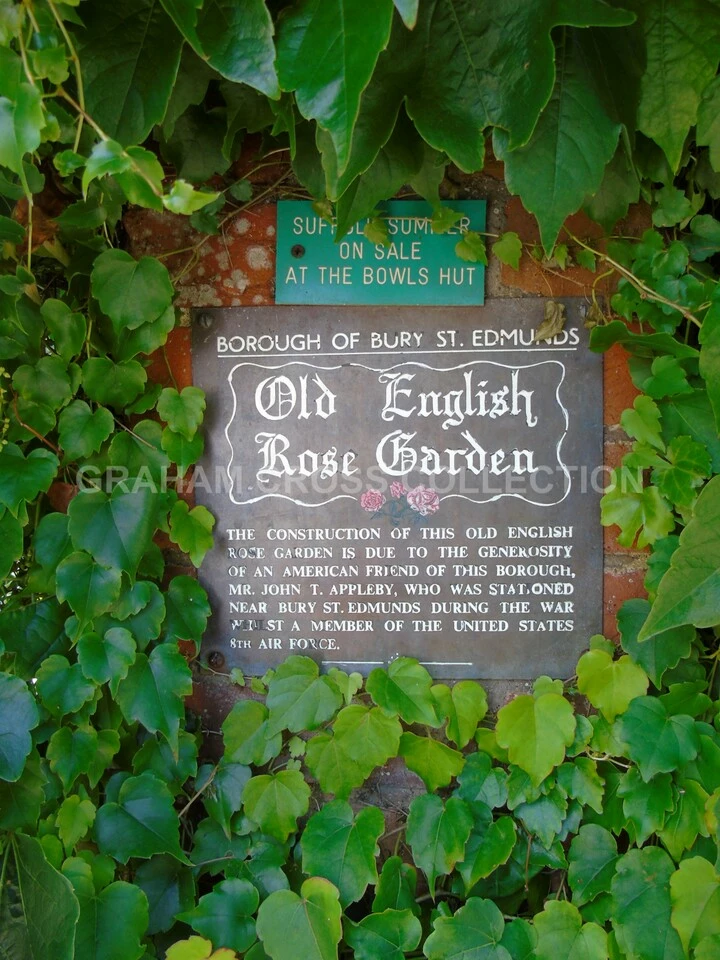
It often takes an outsider to really understand and capture the true nature of a region and Jack Appleby was this is many ways. At 38 (his birthday fell on 10 June 1945), he was a little older than many of the U.S. servicemen in the region and that maturity gave him an appreciation and careful eye for the virtues of Suffolk. Hailing from Fayetteville in Arkansas he studied at Harvard and the Sorbonne and was for a time a reporter for the Paris Times and then wrote column called ‘Post Impressions’ and book reviews for the Washington Post. The war interrupted his career and on enlisting, the army made him a celestial Navigation Trainer. Since the Eighth flew during the day and navigated by radio, his skills were surplus to requirements and he eventually found a role as a glorified clerk. His healthy disrespect for army rules and discipline is visible throughout the book. So too is an undertone of dislike for his fellow Americans and their presence intruding on the rural idyll he had discovered. Keen to get to know the people of Suffolk he made many friends stating he had ‘not come to England to observe Americans here, but to see England and get to know the English.’
Throughout the account, there is an acute appreciation of how Britain was changing because of the war and an understanding of the politics surrounding the Labour election victory that year. Mr H I Jarman and his wife, a former mayor of Bury, were particular friends. Arriving in March 1945 with the war nearly over and no requirement for his particular skills, he had plenty of time to indulge his interests. A devout Catholic convert of English descent, Appleby had an interest in churches and encountering two GIs in Long Melford church one day, they introduced him to the hobby of Brass rubbing. On the surface, his book is largely an account of his brass rubbing expeditions. As he takes you on his expeditions, however, he paints a glorious picture of the Suffolk countryside now long gone and perhaps even then under threat.
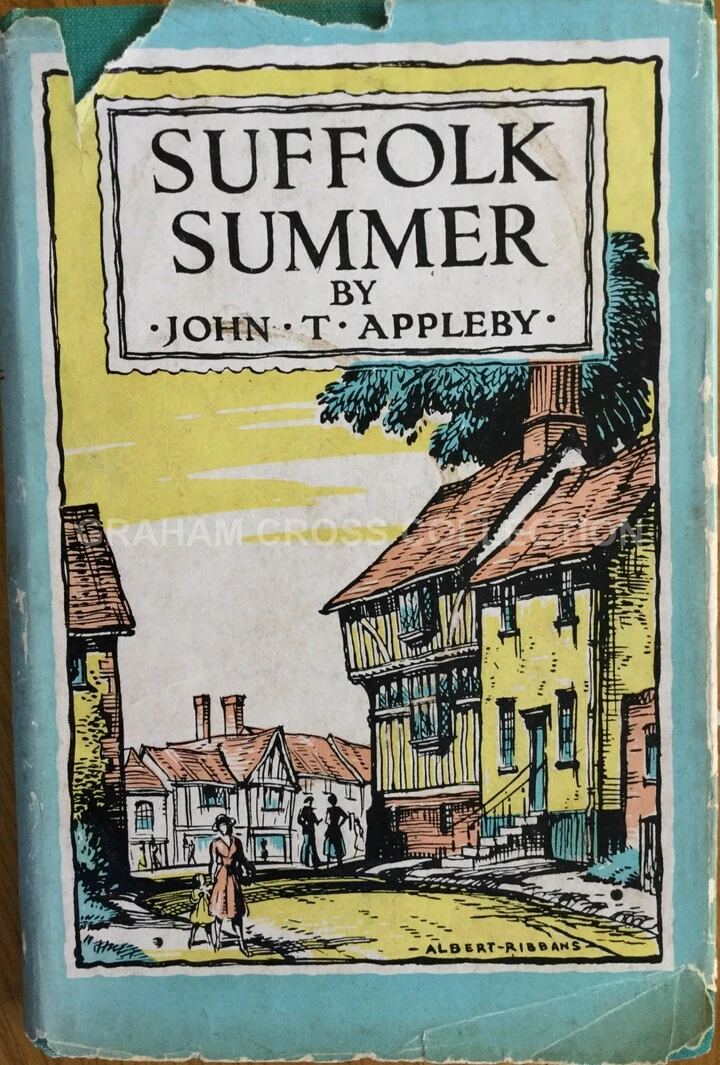
After returning to the United States in November 1945, Appleby first went to Fayetteville for a time to run his families orchards (appropriately the rose garden was once the site of an old orchard) while writing Suffolk Summer, but returned to Washington in 1953 to pursue an academic career. His job as secretary to the American Historical Association gave him the time to write biographies of English kings of the 12th and early 13th centuries, but it is for Suffolk Summer that he is best known and remembered. He died of Leukaemia on 19 December 1974 having never returned to the Suffolk he knew and loved. To have done so, perhaps he knew, would have broken the spell. His book, therefore, lives on and continues to enchant readers with his nostalgic picture of the Suffolk encountered by the Americans during their time here.
Robert S. Arbib Jr. and Here We Are Together
Although Bob Arbib was a biology major from Yale, his writing has a less academic, highbrow tone than his fellow GI, Jack Appleby. Arbib was a keen ornithologist and that clearly gave him a talent for observing his surroundings carefully. A talent for popular communication also meant he was not afraid to show the humble and even darker side of wartime Suffolk. Even so, the romance of place and love of Suffolk and its people infuses his book.
Arbib was born in Gloversville, New York in 1915 and grew up on Long Island. When war came, he found himself an unlikely member of the 820th Engineer (Aviation) Battalion that descended on Debach to build a new airfield for the Americans. His role as camouflage expert was quickly found to be superfluous (much like Appleby’s celestial navigation) and so he became the battalion postal clerk driving regularly to Sudbury to collect letters and important documents.

His keen eye presents a vivid picture of the locals he encounters and the places he visits. The Grundisburgh Dog, Ipswich after dark, Wattisham and Sudbury all feature. So to do the girls – Iris, Daphne and particularly Joan produce some memorable passages in his book. Indeed, at one point he declares Sudbury had the 'prettiest girls' and feared greatly the eventual impact of the huge number of airfields then under construction around the town. Above all, Arbib seems interested in the coming together of two very different peoples and while he does not view it through rose tinted spectacles, he does see it as a positive experience for both visitors and visited.
Arbib worked as an advertising copywriter after the war and pursued his interest in ornithology and nature, eventually publishing five well received books. He died in July 1987 aged 72 leaving a beautiful but short book that captures the essence of wartime Suffolk and the coming together of two peoples during wartime.
Do have a story about American Popular Culture during the Friendly Invasion? Why not share it and your images?
Share your story